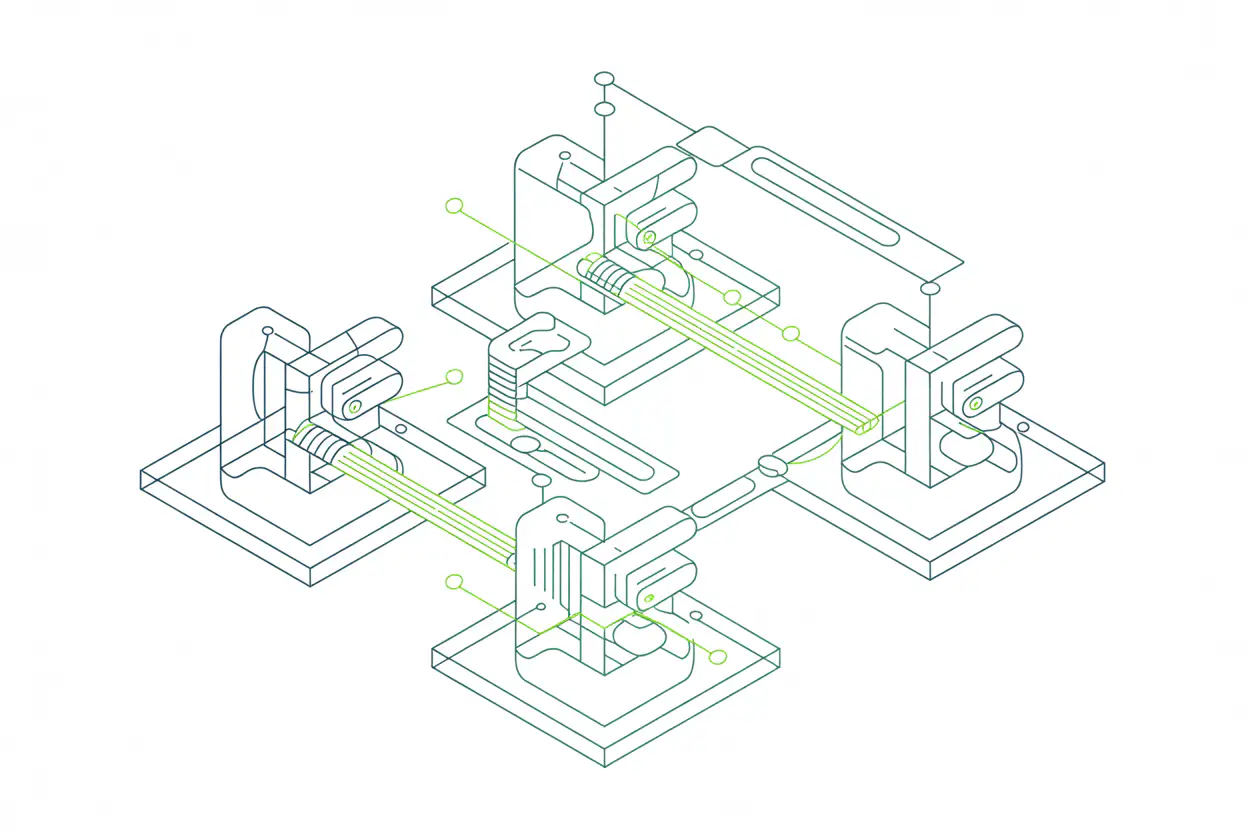TL;DR: Pass@K is simultaneously the most important and most misunderstood metric in AI coding evaluation. While everyone reports Pass@1 scores, the real insights lie in Pass@10 and Pass@100, which better reflect actual developer workflows where multiple solution attempts are normal and expected. The mathematical elegance of the unbiased estimator (Pass@K = E[1 - comb(n-c, k) / comb(n, k)]) masks profound questions about what we're actually measuring: deterministic capability or probabilistic success? The metric's power lies not in its precision but in its revelation of the fundamental stochastic nature of AI code generation. Organizations optimizing for Pass@1 are solving the wrong problem, while those understanding Pass@K's deeper implications are building more effective human-AI collaboration systems.
The Metric That Reveals Everything
When OpenAI introduced Pass@K in their HumanEval paper, they created more than an evaluation metric—they revealed the fundamental probabilistic nature of AI code generation [1]. Unlike traditional software metrics that measure deterministic properties, Pass@K acknowledges that AI systems don't produce consistent outputs. Sometimes they succeed, sometimes they fail, and the pattern of success and failure tells us more about AI capabilities than any single measurement could.
This probabilistic framing represents a profound shift in how we think about AI evaluation. Traditional programming tools either work or they don't. A compiler succeeds or fails deterministically. A static analysis tool produces consistent results given identical inputs. AI code generation systems, by contrast, exhibit inherent variability that makes single-shot evaluation fundamentally inadequate.
The mathematical formulation of Pass@K reflects this reality. Rather than simply generating K solutions and counting successes—which would be computationally expensive and statistically noisy—the metric uses an unbiased estimator: Pass@K = E[1 - comb(n-c, k) / comb(n, k)], where n is the total number of solutions generated, c is the number that pass tests, and the combination functions calculate the probability that all K samples would fail [2].
This mathematical elegance masks a deeper philosophical question: what does it mean for an AI system to "know" how to code? If a model can solve a problem correctly 7 times out of 10 attempts, does it understand the solution? The Pass@K framework suggests that understanding itself might be probabilistic—that AI systems don't have binary knowledge states but rather probability distributions over solution spaces.
The Pass@1 Obsession Problem
The AI community's fixation on Pass@1 scores represents a fundamental misunderstanding of both the metric and the reality of software development. Pass@1 measures the probability of getting a correct solution on the first attempt—a scenario that rarely reflects actual development workflows.
Real programmers don't write perfect code on their first try. They iterate, debug, refine, and improve their solutions through multiple attempts. They run code, see errors, and adjust their approach. They experiment with different algorithms, test edge cases, and optimize for various constraints. The idea that AI systems should be evaluated based on first-attempt success ignores the iterative nature of programming itself.
Consider the implications of optimizing for Pass@1. Models trained to maximize first-attempt success might develop conservative strategies that avoid risk-taking or creative solutions. They might prioritize safe, conventional approaches over innovative or elegant solutions that require more exploration. This optimization pressure could actually reduce the diversity and creativity of AI-generated code.
The Pass@1 obsession also creates misleading competitive dynamics. A model that achieves 65% Pass@1 but 90% Pass@10 might be more practically useful than one that achieves 70% Pass@1 but only 75% Pass@10. The first model provides more opportunities for successful human-AI collaboration, while the second might frustrate users with consistently mediocre performance.
More fundamentally, Pass@1 optimization ignores the reality that AI systems are most effective when integrated into human workflows that naturally involve iteration and refinement. A model that generates multiple solution candidates for human review and selection might be more valuable than one that attempts to produce perfect solutions autonomously.
The Pass@10 Sweet Spot
Pass@10 represents a more realistic and practically relevant evaluation scenario. It measures the probability that at least one correct solution appears among ten attempts—a number that aligns well with typical developer patience and review capacity.
From a cognitive perspective, ten solutions represent a manageable set for human evaluation. Developers can reasonably review ten code snippets, compare their approaches, and select the most appropriate solution for their context. This number balances comprehensiveness with practicality, providing enough diversity to capture different solution strategies without overwhelming human reviewers.
The Pass@10 scenario also better reflects the reality of AI-assisted development workflows. Developers using AI coding tools typically generate multiple solutions, either through explicit requests for alternatives or through iterative refinement processes. They might ask for different approaches, request optimizations for specific constraints, or explore various implementation strategies.
Analysis of Pass@10 performance reveals insights that Pass@1 scores miss entirely. Models might show consistent Pass@10 performance across different problem types, indicating reliable capability to generate correct solutions even when first attempts fail. Alternatively, they might show high variance in Pass@10 scores, suggesting that success depends heavily on problem characteristics or random factors.
The gap between Pass@1 and Pass@10 provides particularly valuable insights into model behavior. Large gaps suggest high solution diversity with inconsistent quality—the model can solve problems but not reliably on first attempts. Small gaps might indicate either consistently high quality or limited solution diversity. Understanding these patterns helps predict how models will perform in different deployment scenarios.
The Pass@100 Frontier
Pass@100 pushes evaluation into territory that reveals the true limits of model capabilities. At this scale, we're asking whether a model can solve a problem given extensive opportunity for exploration and iteration. This scenario tests not just knowledge but the model's ability to explore solution spaces effectively.
From a practical perspective, Pass@100 might seem excessive—no human developer would review 100 solution attempts. However, this metric provides crucial insights into model potential and the theoretical limits of AI coding capabilities. It reveals whether models can eventually find correct solutions through exploration or whether they have fundamental knowledge gaps that prevent success regardless of attempt count.
The Pass@100 scenario also enables analysis of solution diversity and exploration strategies. Models that achieve high Pass@100 scores through diverse solution approaches demonstrate sophisticated understanding of problem-solving strategies. Those that achieve similar scores through minor variations of the same approach might have more limited capability despite similar aggregate performance.
Advanced analysis of Pass@100 results can reveal the distribution of solution quality across attempts. Some models might generate their best solutions early, with later attempts showing degraded quality. Others might show improving quality over time, suggesting that the generation process itself involves learning or refinement.
The computational cost of Pass@100 evaluation makes it impractical for routine assessment, but it provides valuable insights for understanding model capabilities and guiding development priorities. Organizations might use Pass@100 evaluation selectively for critical capabilities or challenging problem sets where understanding the limits of model performance is essential.
The Temporal Dimension of Pass@K
One of the most overlooked aspects of Pass@K evaluation involves the temporal ordering of solution attempts. The standard metric treats all K attempts as equivalent, but the order in which solutions are generated can provide crucial insights into model behavior and practical utility.
Models that consistently generate their best solutions first demonstrate different capabilities than those that require extensive exploration to find correct answers. Early success suggests confident knowledge and efficient solution strategies. Late success might indicate broader exploration capabilities but less focused problem-solving approaches.
Temporal analysis of Pass@K results reveals patterns that aggregate metrics miss. Some models might show declining quality over multiple attempts, suggesting that early solutions represent the model's best understanding while later attempts involve less confident exploration. Others might show improving quality, indicating that the generation process involves iterative refinement or learning.
These temporal patterns have practical implications for deployment strategies. Models that generate high-quality solutions early are suitable for scenarios where users want immediate results. Those that improve over multiple attempts might be better suited for exploratory or research-oriented applications where users are willing to invest time in solution exploration.
The most sophisticated Pass@K analysis examines both aggregate success rates and temporal patterns simultaneously. This analysis provides comprehensive insights into model behavior that enable more effective deployment and integration strategies.
The Human-AI Collaboration Implications
Pass@K metrics reveal fundamental insights about effective human-AI collaboration in coding tasks. The metric's structure—measuring success across multiple attempts—naturally aligns with collaborative workflows where humans and AI systems work together iteratively to develop solutions.
In collaborative scenarios, Pass@K performance predicts the efficiency of human-AI interaction. High Pass@10 scores suggest that human reviewers will quickly find acceptable solutions among AI-generated candidates. Low Pass@10 but high Pass@100 scores indicate that collaboration will require more extensive exploration but can eventually succeed.
The diversity of solutions generated across K attempts provides additional collaboration insights. Models that generate diverse solution approaches enable humans to explore different strategies and select approaches that best fit their specific requirements. Those that generate minor variations of similar solutions provide less collaborative value despite potentially similar Pass@K scores.
Understanding Pass@K patterns helps design more effective collaboration interfaces. Systems might prioritize early solutions for models that generate high-quality results initially, or provide exploration interfaces for models that improve over multiple attempts. The key insight is that effective collaboration requires understanding not just whether models can solve problems but how they explore solution spaces.
The Gaming and Optimization Challenges
Pass@K metrics create complex optimization challenges that can lead to gaming behaviors and misaligned development incentives. Models optimized for Pass@K performance might develop strategies that improve metric scores without necessarily improving practical utility.
One gaming strategy involves generating multiple minor variations of the same solution approach. This can improve Pass@K scores by increasing the probability that at least one variation succeeds, but it doesn't provide the solution diversity that makes multiple attempts valuable for human reviewers.
Another gaming approach involves optimizing for specific types of problems that appear frequently in evaluation benchmarks. Models might achieve high Pass@K scores on benchmark problems while struggling with real-world coding tasks that don't match benchmark characteristics.
The most sophisticated gaming involves optimizing the exploration strategy itself. Models might learn to generate solutions in orders that maximize Pass@K scores rather than providing the most useful solution sequences for human collaboration.
Detecting and countering these gaming behaviors requires sophisticated analysis that goes beyond aggregate Pass@K scores. Effective evaluation examines solution diversity, explores performance across different problem types, and analyzes the practical utility of generated solution sets.
The Statistical Sophistication Requirement
Proper interpretation of Pass@K results requires statistical sophistication that goes far beyond simple score comparison. The metric involves complex probability calculations, sampling effects, and confidence intervals that significantly impact result interpretation.
The unbiased estimator used in Pass@K calculations assumes specific sampling conditions that may not hold in practice. Variations in generation temperature, sampling methods, or prompt formulations can affect the statistical properties of Pass@K measurements in ways that aren't immediately obvious.
Confidence intervals for Pass@K scores depend on both the number of problems evaluated and the number of solutions generated per problem. Small evaluation sets or limited solution sampling can produce misleading confidence intervals that suggest precision where none exists.
Comparing Pass@K scores across different models requires careful attention to evaluation conditions, statistical significance testing, and the practical significance of observed differences. A model that achieves 75% ± 5% Pass@10 performance is not meaningfully different from one that achieves 73% ± 5%, despite the apparent ranking difference.
The most sophisticated Pass@K analysis includes bootstrap confidence intervals, significance testing across multiple evaluation runs, and sensitivity analysis that examines how results change under different evaluation conditions.
The Future Evolution of Pass@K
As AI coding capabilities continue to advance, Pass@K metrics must evolve to address new challenges and opportunities. Current formulations assume independent solution attempts, but future AI systems might exhibit learning or adaptation across multiple attempts that violates this assumption.
Advanced AI systems might demonstrate meta-learning capabilities where later solution attempts benefit from insights gained during earlier attempts. This would require new evaluation frameworks that account for the non-independence of solution attempts and the potential for iterative improvement within single evaluation sessions.
Multi-modal AI systems that can analyze code execution results, error messages, and debugging information might exhibit different Pass@K patterns than current text-only models. These systems might show improving performance over multiple attempts as they incorporate feedback from execution attempts.
The integration of AI coding systems with development environments creates opportunities for more sophisticated Pass@K evaluation that includes real-world factors like compilation success, test coverage, performance characteristics, and integration compatibility.
Future Pass@K evolution might also address the current limitation of binary success/failure evaluation. More nuanced scoring systems could account for partial correctness, code quality, efficiency, and maintainability in ways that provide richer insights into AI coding capabilities.
Practical Guidelines for Pass@K Interpretation
Effective use of Pass@K metrics requires systematic approaches that account for the metric's complexity and the various factors that influence its interpretation. Organizations should develop standardized evaluation procedures that ensure consistent and meaningful Pass@K measurements.
Always report multiple Pass@K values (typically Pass@1, Pass@10, and Pass@100) to provide comprehensive insights into model behavior. The relationships between these values reveal important characteristics about solution quality, diversity, and exploration capabilities.
Include confidence intervals and statistical significance testing in Pass@K reporting. The probabilistic nature of the metric makes uncertainty quantification essential for meaningful interpretation and comparison.
Analyze solution diversity alongside Pass@K scores to understand whether high performance reflects genuine capability or gaming behaviors. High Pass@K scores with low solution diversity might indicate optimization artifacts rather than robust problem-solving ability.
Consider the temporal patterns of solution generation when interpreting Pass@K results. Models that generate high-quality solutions early have different practical implications than those requiring extensive exploration to achieve success.
Supplement Pass@K evaluation with real-world deployment testing to validate that benchmark performance translates to practical utility. The metric provides valuable insights but cannot capture all aspects of AI coding effectiveness.
Most importantly, recognize that Pass@K metrics reveal the probabilistic nature of AI code generation and design deployment strategies that leverage this understanding rather than fighting against it. The most effective AI coding systems embrace the iterative, exploratory nature of AI-generated solutions rather than attempting to force deterministic behavior.
The future of AI-assisted programming depends on developing more sophisticated understanding of metrics like Pass@K and using these insights to build better human-AI collaboration systems. Organizations that develop nuanced Pass@K interpretation capabilities will be better positioned to leverage AI coding tools effectively while avoiding the pitfalls of metric gaming and misaligned optimization.
References
[1] Chen, M., Tworek, J., Jun, H., Yuan, Q., Pinto, H. P. D. O., Kaplan, J., ... & Zaremba, W. (2021). Evaluating large language models trained on code. https://arxiv.org/abs/2107.03374
[2] Chen, Y. (2024). A dive into how pass@k is calculated for evaluation of LLM's coding. https://medium.com/@yananchen1116/a-dive-into-how-pass-k-is-calculated-for-evaluation-of-llms-coding-e52b8528235b






.webp)






